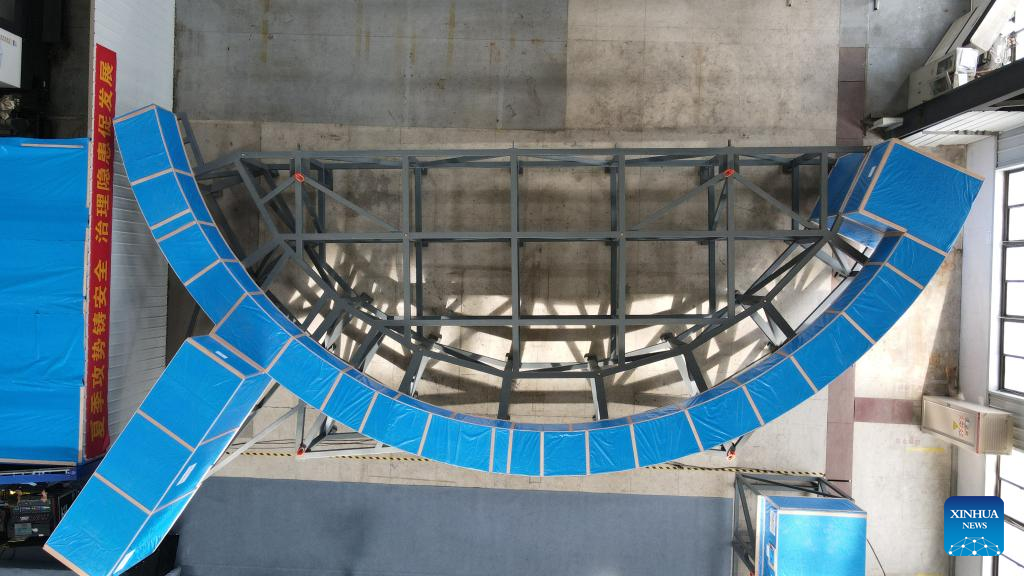
 0 Comment(s)
0 Comment(s) Print
Print E-mail Xinhua, April 12, 2025
E-mail Xinhua, April 12, 2025
An aerial drone photo taken on April 11, 2025 shows the final set of Correction Coil In-Cryostat Feeder components of ITER (International Thermonuclear Experimental Reactor) to be delivered in Hefei, east China's Anhui Province. (Xinhua/Zhou Mu)
China on Friday completed and shipped the final set of Correction Coil In-Cryostat Feeder components to the site of ITER (International Thermonuclear Experimental Reactor) in southern France, signifying that all the super-large components needed for ITER's magnet feeder system have now been successfully developed, its developer said.
The ITER magnet feeder system was developed by the Chinese Academy of Sciences' Institute of Plasma Physics (ASIPP), and it is known as the "lifeline" of the ITER magnet system. Its largest component, the Correction Coil In-Cryostat Feeder, comprises 9 sets built as half-ring structures measuring 16 meters in diameter and 3 meters in height.
The ITER, one of the largest and most important international scientific research projects in the world, is popularly known as "Artificial Sun." This nickname stems from its ability to generate clean, carbon-free energy in a way similar to the sun, by emitting light and heat through fusion reactions.
The ITER is jointly funded by the European Union, China, the United States, Japan, the Republic of Korea, India and Russia.
According to Lu Kun, deputy director of ASIPP, the magnet feeder system is crucial to ITER. It provides energy and cooling media to the fusion reactor magnets, sends back critical control signals, and also acts as a discharge channel to safely release stored magnet energy.
Independently manufactured and tested by ASIPP, the system is the most complex of China's ITER procurement packages, consisting of a total of 31 sets, with a total weight of about 1,600 tonnes, Lu added.
Song Yuntao, vice president of the Hefei Institutes of Physical Science and director of ASIPP, noted that over the past 20 years, ASIPP has built stable collaborative relationships with more than 140 research institutions across over 50 countries, assisting many emerging countries in developing their own fusion research programs and facilities.
Go to Forum >>0 Comment(s)